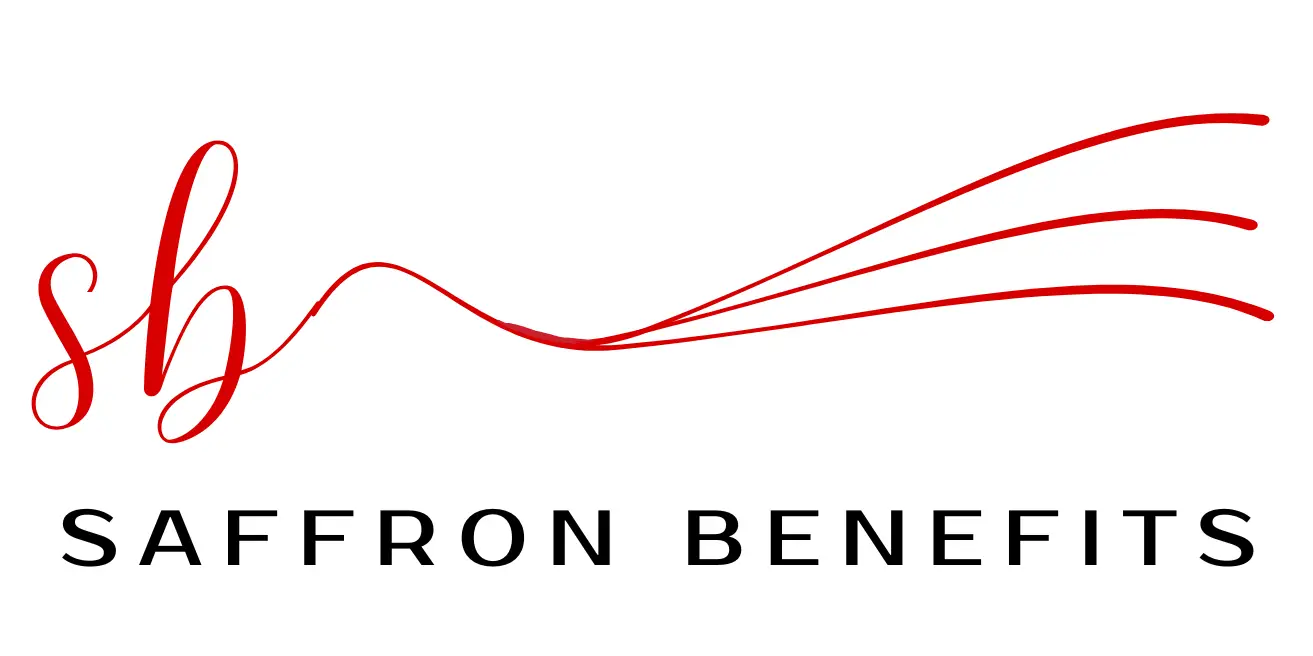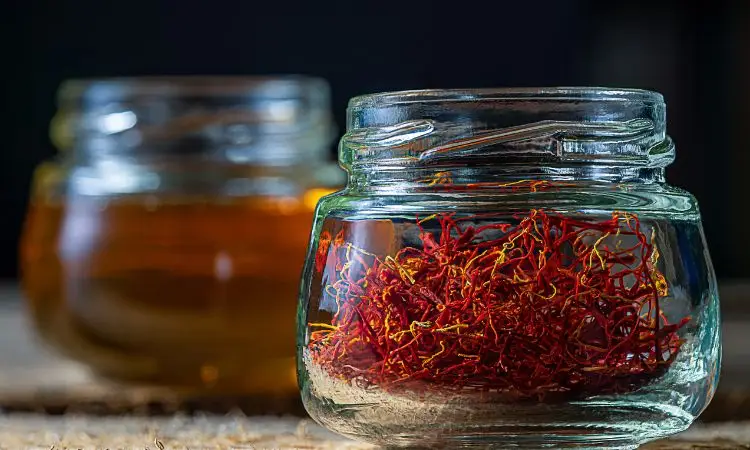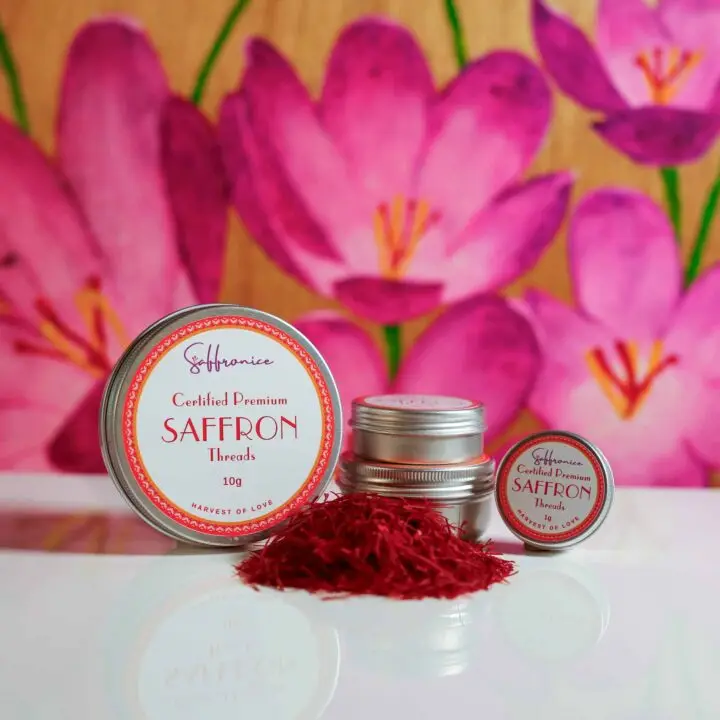Saffron, the world’s most precious spice, is prized for its vibrant hue, distinct aroma, and complex flavors. Preserving the integrity of this delicate ingredient is crucial for home cooks and professional chefs alike. This comprehensive guide explores various saffron storage methods to maintain the spice’s quality, flavor, and color while extending shelf life through proper preservation techniques.
Understanding how environmental factors impact saffron’s chemical composition enables optimal storage decisions that protect your valuable investment in this golden spice.
📌 Quick Answer: Store saffron in airtight, opaque containers at 50-70°F with 30-50% humidity, away from light. Use glass or metal containers with tight seals. For extended storage, freeze at 0°F in airtight containers for up to 2 years.
🔑 Key Takeaways:
- Understand sensitivity factors affecting saffron’s chemical composition
- Select ideal airtight containers for optimal preservation
- Control temperature and humidity for maximum freshness
- Implement light protection to preserve color and flavor
- Master freezer storage techniques for extended shelf life
- Avoid common storage mistakes causing deterioration
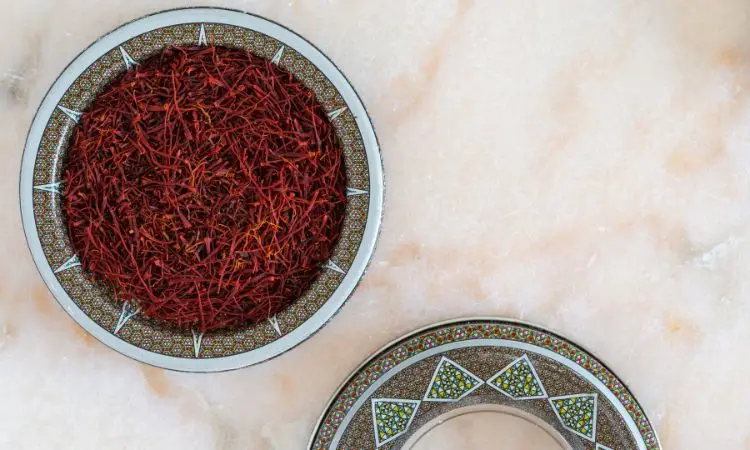
Understanding Saffron’s Delicate Nature
Saffron threads possess extraordinary sensitivity to environmental factors, making proper storage methods crucial for maintaining saffron quality standards and preserving their coveted characteristics.
Chef’s Professional Tip: During my culinary career, I’ve learned that saffron’s delicate compounds can deteriorate within hours under improper conditions. Investing in proper storage prevents costly waste of this expensive spice.
Food Scientist’s Note: Saffron’s bioactive compounds—crocin, picrocrocin, and safranal—are highly volatile and sensitive to oxidation, light, and temperature variations. Understanding their stability helps optimize preservation strategies.
Chemical Composition and Sensitivity Factors
Saffron’s distinctive characteristics stem from volatile organic compounds that contribute to its vibrant color, bittersweet taste, and captivating aroma. These compounds are highly susceptible to degradation when exposed to environmental stressors.
Primary Bioactive Compounds:
- Crocin – provides vibrant golden-red color
- Picrocrocin – creates a distinctive bittersweet taste
- Safranal – produces a characteristic floral aroma
Why Proper Storage Matters
Maintaining saffron quality requires careful attention to storage conditions. Improper handling leads to significant loss of distinctive characteristics, diminishing both culinary and economic value. Professional container selection addresses these vulnerability factors.
Essential Storage Method Fundamentals
Preserving saffron’s delicate nature requires comprehensive attention to multiple storage factors working synergistically to maintain optimal conditions.
Core Storage Principles
Airtight Protection: Saffron’s susceptibility to oxidation requires complete air exclusion through high-quality sealing systems that create oxygen-free environments.
Temperature Stability: Cool, consistent environments between 50-70°F (10-21°C) protect sensitive compounds from thermal degradation.
Moisture Management: Dry storage conditions with 30-50% relative humidity prevent mold growth while avoiding brittleness from excessive drying.
Implementing comprehensive preservation tips ensures maximum quality retention throughout storage periods.
Selecting Optimal Airtight Containers
Container choice significantly impacts preservation effectiveness through material properties, sealing capabilities, and environmental protection features.
Glass vs. Metal Container Comparison
Glass Containers:
- Provide visual monitoring of saffron condition
- Offer inert, non-reactive storage environments
- Enable easy quality assessment
- Require dark storage for light protection
Metal Containers:
- Deliver superior light-blocking capabilities
- Provide excellent airtight sealing properties
- Offer durability and portability
- Maintain consistent internal conditions
Light-Blocking Material Importance
Saffron’s sensitivity to light exposure requires materials that effectively block UV and visible light spectrums. Professional temperature storage methods emphasize combining light protection with thermal control.
Seal Quality Considerations
High-quality seals prevent air and moisture infiltration that compromises saffron quality. Look for containers featuring silicone gaskets or precision-engineered closures that maintain airtight integrity.
| Container Type | Light Blocking | Airtightness | Suitability |
|---|---|---|---|
| Glass Jar | Moderate | Excellent | High |
| Metal Tin | Excellent | Excellent | Excellent |
| Plastic Container | Poor | Moderate | Low |
Temperature and Humidity Control Systems
Maintaining optimal environmental conditions requires understanding how temperature and humidity interact to affect saffron stability and longevity.
Optimal Temperature Ranges
Temperature storage requirements specify maintaining 50-70°F (10-21°C) for optimal compound preservation. This range protects sensitive aromatic compounds while preventing thermal degradation.
Temperature Impact Analysis:
- Below 50°F: Risk of structural damage to delicate threads
- 50-70°F: Optimal preservation range for maximum quality
- Above 70°F: Accelerated compound breakdown and potency loss
Humidity Management Strategies
Professional moisture protection maintains 30-50% relative humidity through controlled environments and moisture-absorbing materials.
Humidity Control Methods:
- Desiccant packs – absorb excess moisture effectively
- Silica gel – provides consistent dry conditions
- Climate control – maintains stable environmental conditions
| Storage Parameter | Optimal Range | Impact on Quality |
|---|---|---|
| Temperature | 50-70°F (10-21°C) | Preserves compound stability |
| Humidity | 30-50% RH | Prevents mold and brittleness |
Light Protection and Preservation
Understanding light exposure effects enables implementation of effective protection strategies that preserve saffron’s visual and aromatic qualities.
UV Ray Impact on Quality
UV radiation triggers oxidative reactions within carotenoid pigments, causing color fading and aromatic compound degradation. Extended exposure permanently damages saffron’s distinctive characteristics.
Dark Storage Solutions
Effective Light Protection Methods:
- Opaque containers – complete light exclusion
- Amber glass – UV filtering with visibility
- Dark storage locations – environmental light control
- Light-blocking materials – specialized protective barriers
These protection strategies work together to maintain saffron’s vibrant color and preserve delicate aromatic compounds throughout storage periods.
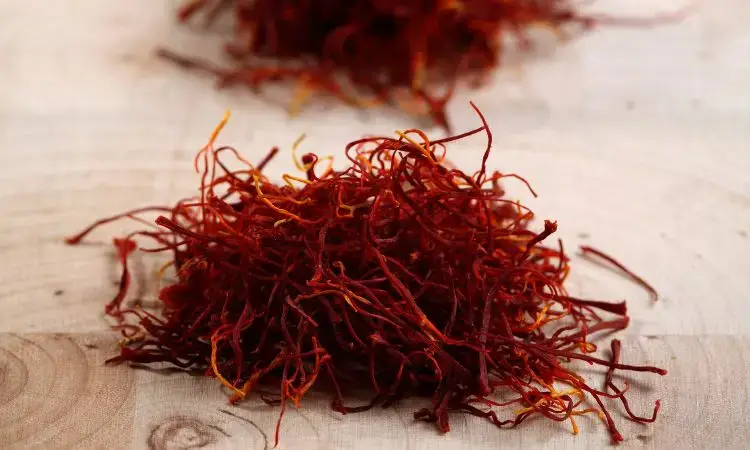
Freezer Storage for Extended Preservation
Freezer storage offers maximum shelf life extension when implemented correctly using appropriate preparation and thawing techniques.
Preparation Protocol
Before freezing, ensure saffron threads are completely clean and dry. Remove any residual dust or debris using soft, lint-free cloths while avoiding moisture exposure that compromises quality.
Optimal Freezer Conditions
Maintain consistent freezer temperatures between 0°F to -4°F (-18°C to -20°C) for optimal compound preservation. Stable temperatures prevent degradation from thermal fluctuations.
Safe Thawing Procedures
Gradual thawing through refrigerator transition prevents condensation formation and quality deterioration. Allow slow temperature adjustment to room conditions while maintaining sealed environments.
Freezer Storage Benefits:
- Extends usable life to 12-24 months
- Preserves volatile compounds effectively
- Maintains color and aroma intensity
- Provides long-term storage security
Common Storage Mistakes Prevention
Understanding typical storage errors enables proactive prevention strategies that protect saffron quality and preserve your investment.
Critical Mistake Categories
Moisture Exposure Risks: Excessive humidity or direct water contact promotes mold growth and bacterial contamination. This compromises both safety and quality while creating health risks.
Temperature Fluctuation Problems: Sudden temperature changes degrade delicate compounds, causing permanent quality loss. Consistent environmental conditions prove essential for preservation.
Light Damage Issues: Extended light exposure fades color compounds and reduces aromatic intensity. Dark storage environments prevent photodegradation.
Prevention Strategies
| Common Mistake | Prevention Method |
|---|---|
| Moisture exposure | Airtight containers with desiccants |
| Temperature fluctuation | Stable storage environments |
| Light exposure | Opaque containers in dark locations |
| Air exposure | Quality sealing systems |
Professional potency maintenance requires addressing all potential degradation factors simultaneously.
Quality Assessment and Monitoring
Learning to recognize spoilage signs enables early intervention and quality maintenance throughout storage periods.
Properly Stored Saffron Characteristics
Visual Indicators:
- Vibrant, deep red-orange coloration
- Intact thread structure without brittleness
- Uniform appearance throughout the batch
Aromatic Properties:
- Rich, floral fragrance intensity
- Characteristic honey-like undertones
- No musty or off-odors present
Deterioration Warning Signs
Quality Decline Indicators:
- Faded, dull coloration
- Brittle, crumbly thread texture
- Diminished or altered aroma
- Visible mold or moisture damage
Regular quality assessment ensures optimal usage timing and prevents waste of valuable saffron supplies.
Expert Storage Recommendations
Chef’s Wisdom: Invest in quality storage systems that match your usage patterns. Frequent users benefit from accessible containers with excellent sealing, while occasional users need maximum preservation through freezer storage.
Food Scientist’s Advice: Monitor environmental conditions regularly and document storage performance. This data helps optimize storage protocols and ensures consistent quality outcomes.
Quality sourcing from reputable suppliers combined with proper storage creates lasting value for your saffron investment.
Conclusion
Mastering saffron storage methods requires understanding environmental sensitivity factors and implementing comprehensive protection strategies. By controlling temperature, humidity, light exposure, and air contact while using appropriate containers, you can preserve saffron’s exceptional qualities for extended periods.
Whether employing room temperature, refrigeration, or freezer storage methods, consistent application of these techniques ensures your saffron maintains its remarkable characteristics and delivers optimal performance in culinary applications.
Remember that effective preservation begins with quality sourcing and continues through every aspect of storage management. Regular monitoring and proper technique application protect your investment in this precious spice.
Frequently Asked Questions
What are the best saffron storage methods? Use airtight containers with light protection, maintain 50-70°F temperatures with 30-50% humidity, and store in dark locations. Glass and metal containers provide optimal protection.
How can I extend saffron’s shelf life? Store in airtight containers in cool, dry, dark places. For maximum extension, use freezer storage at 0°F in properly sealed containers for up to 2 years.
What container types work best for saffron storage? Glass jars and metal tins with tight-fitting lids provide excellent protection. These materials block light and maintain optimal temperature and humidity levels.
How do I control temperature and humidity for saffron storage? Maintain consistent 50-70°F temperatures with 30-50% relative humidity using desiccants and stable storage environments away from heat sources.
Can freezing extend saffron’s shelf life? Yes, proper freezer storage significantly extends shelf life. Use airtight, light-blocking containers and maintain consistent 0°F temperatures for optimal results.
What storage mistakes should I avoid? Avoid moisture exposure, temperature fluctuations, direct sunlight exposure, and inadequate sealing. These factors rapidly degrade saffron quality and aroma.
How can I tell if stored saffron has deteriorated? Fresh saffron displays vibrant red color, rich floral aroma, and flexible thread texture. Deteriorated saffron appears faded, lacks aroma intensity, and feels brittle or damp.
